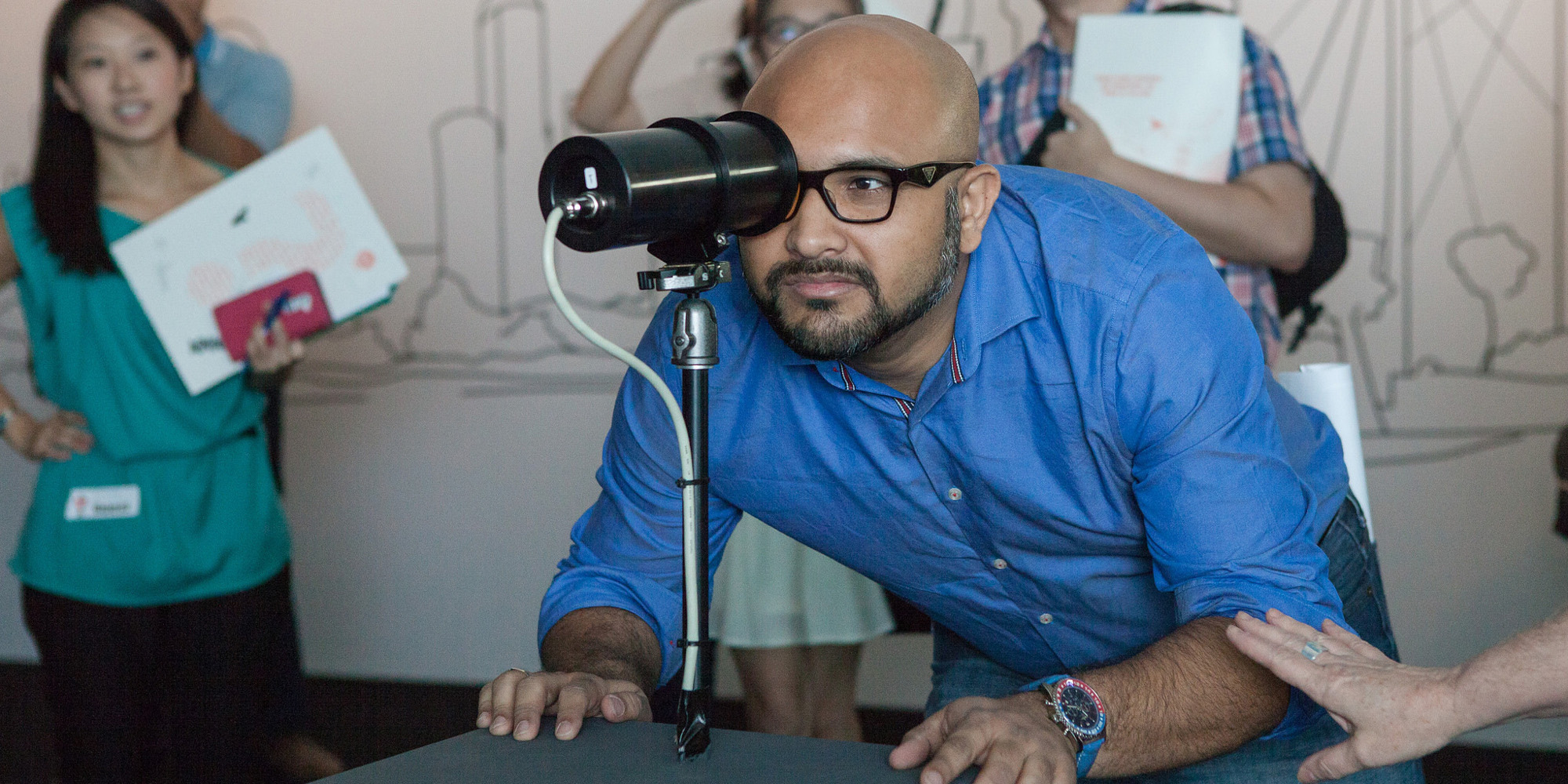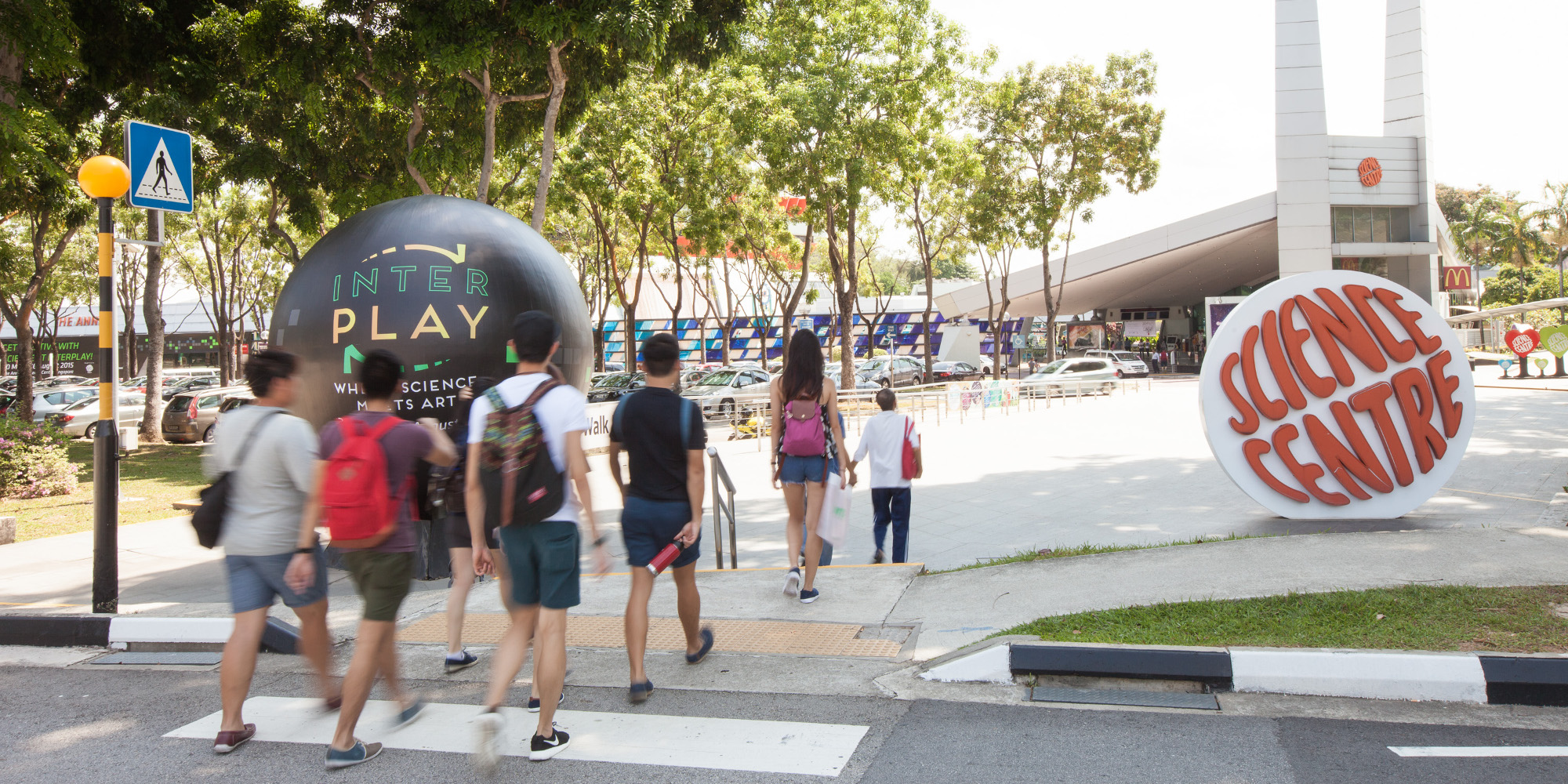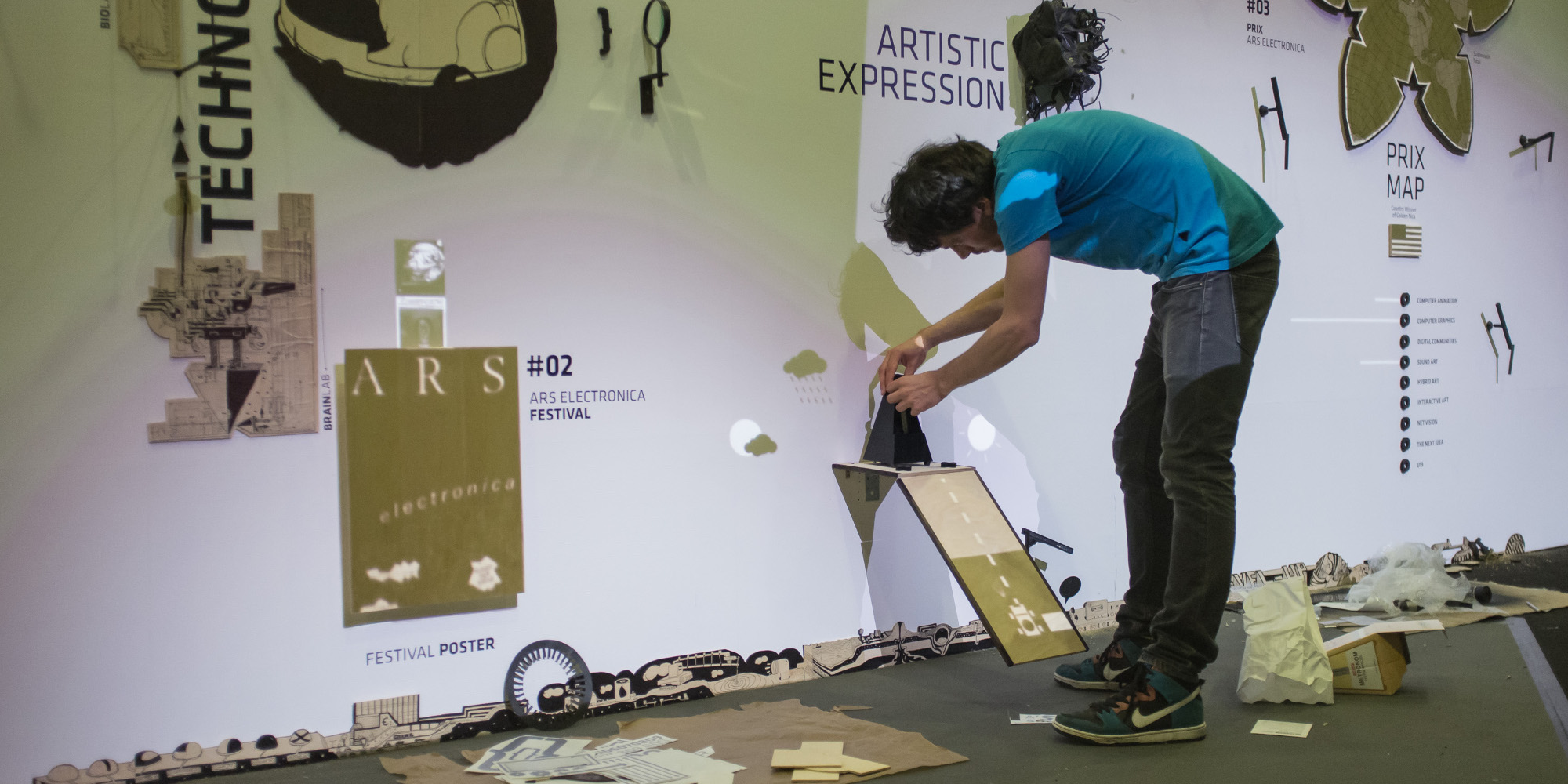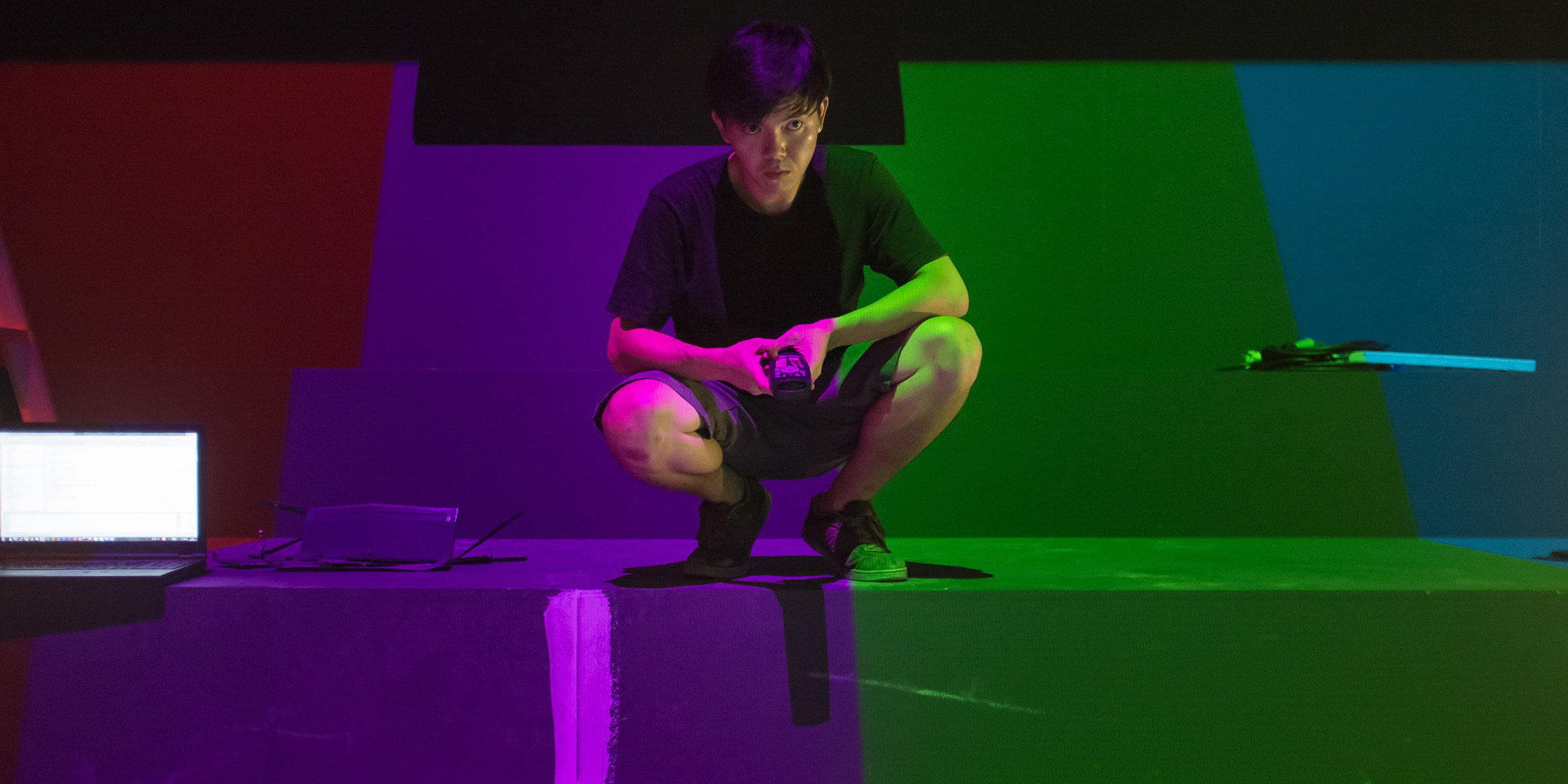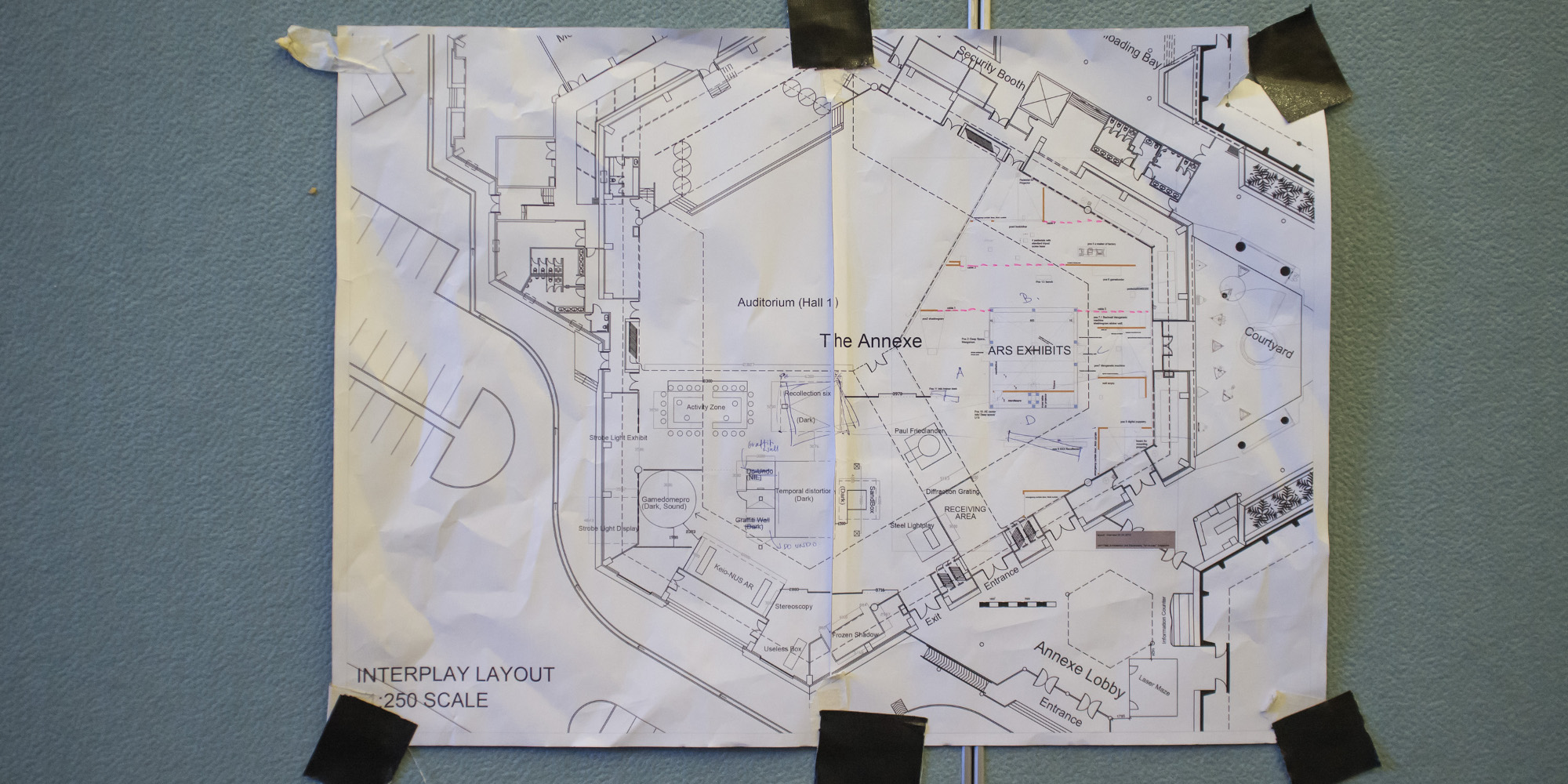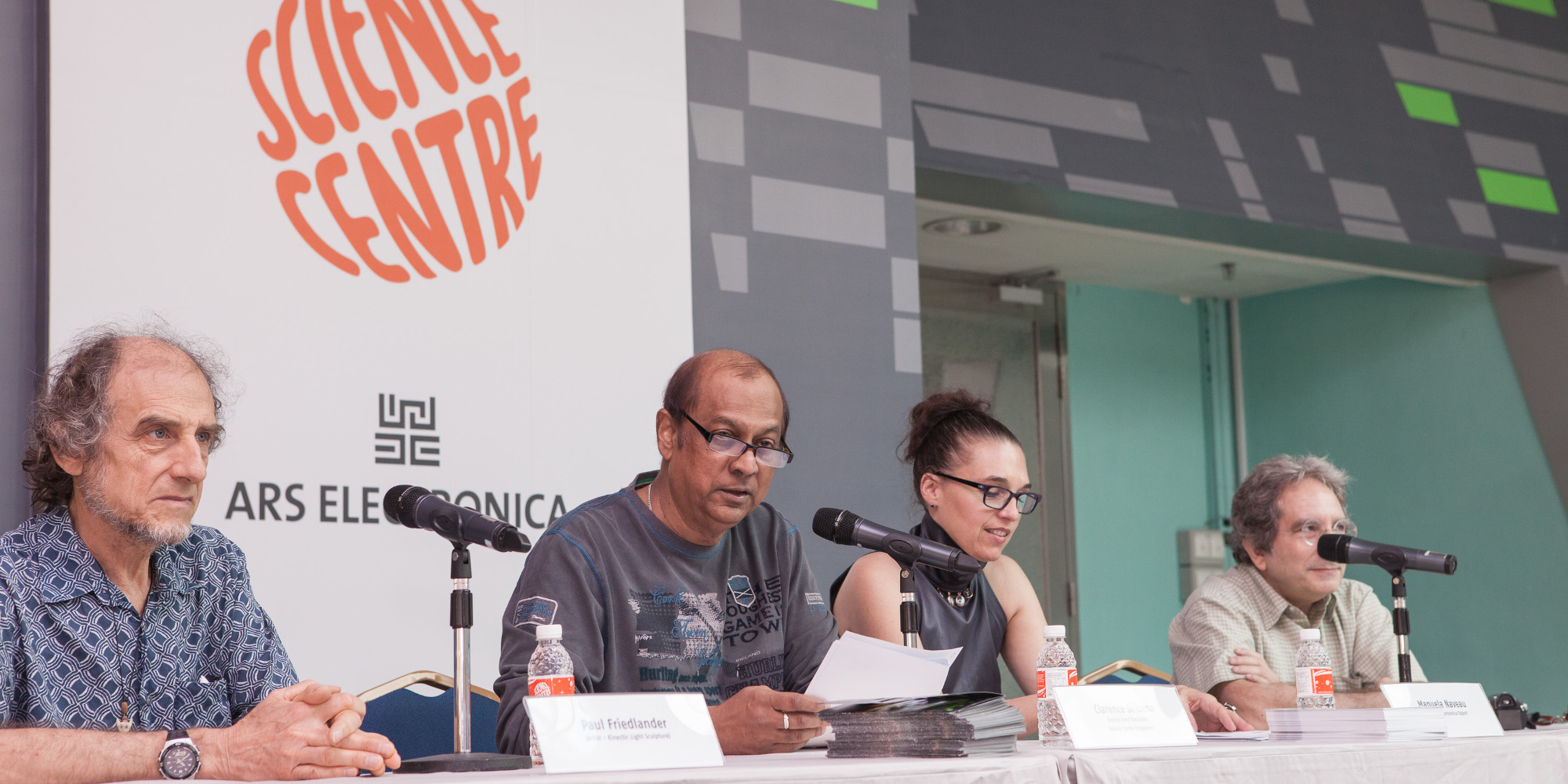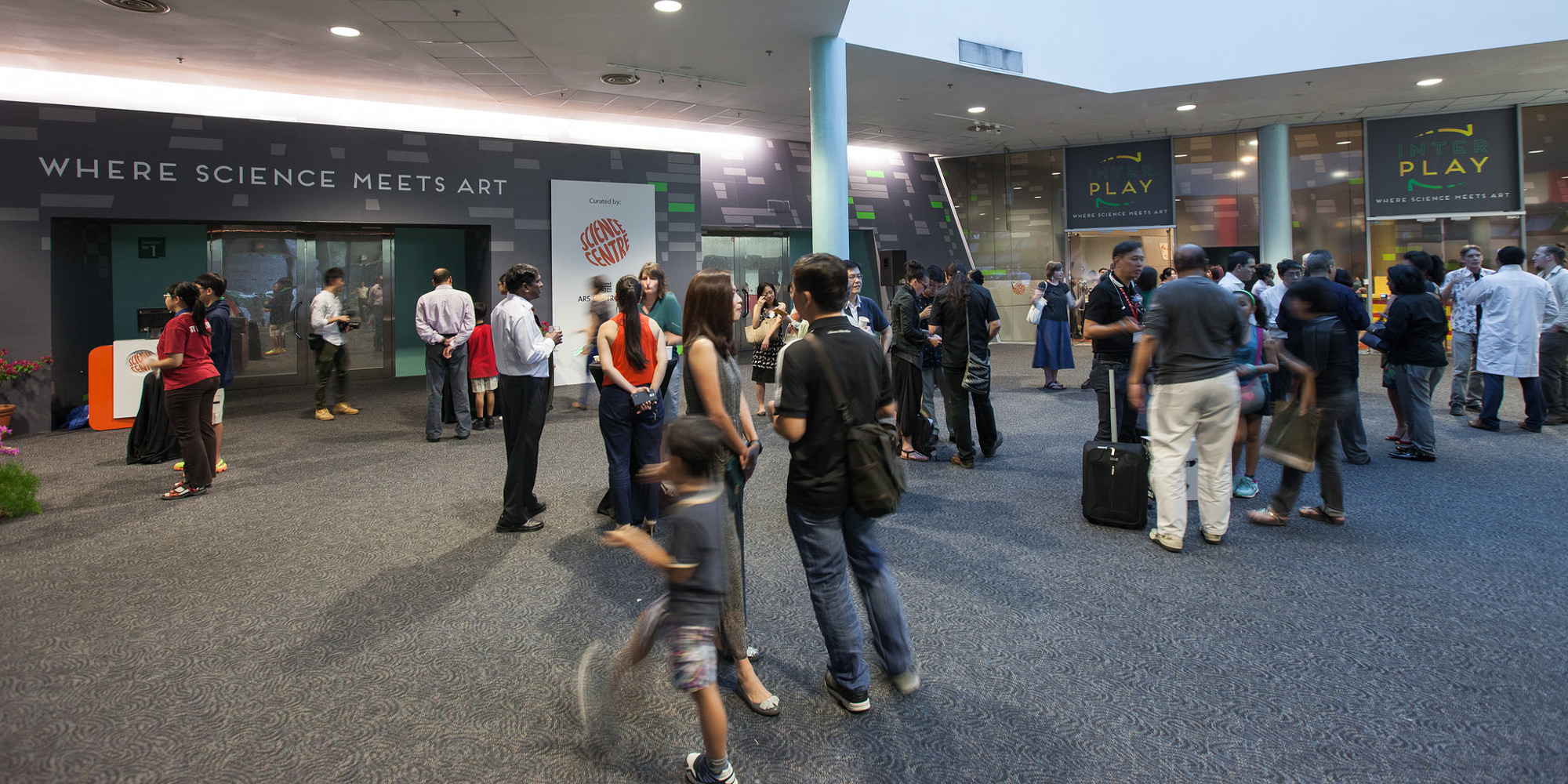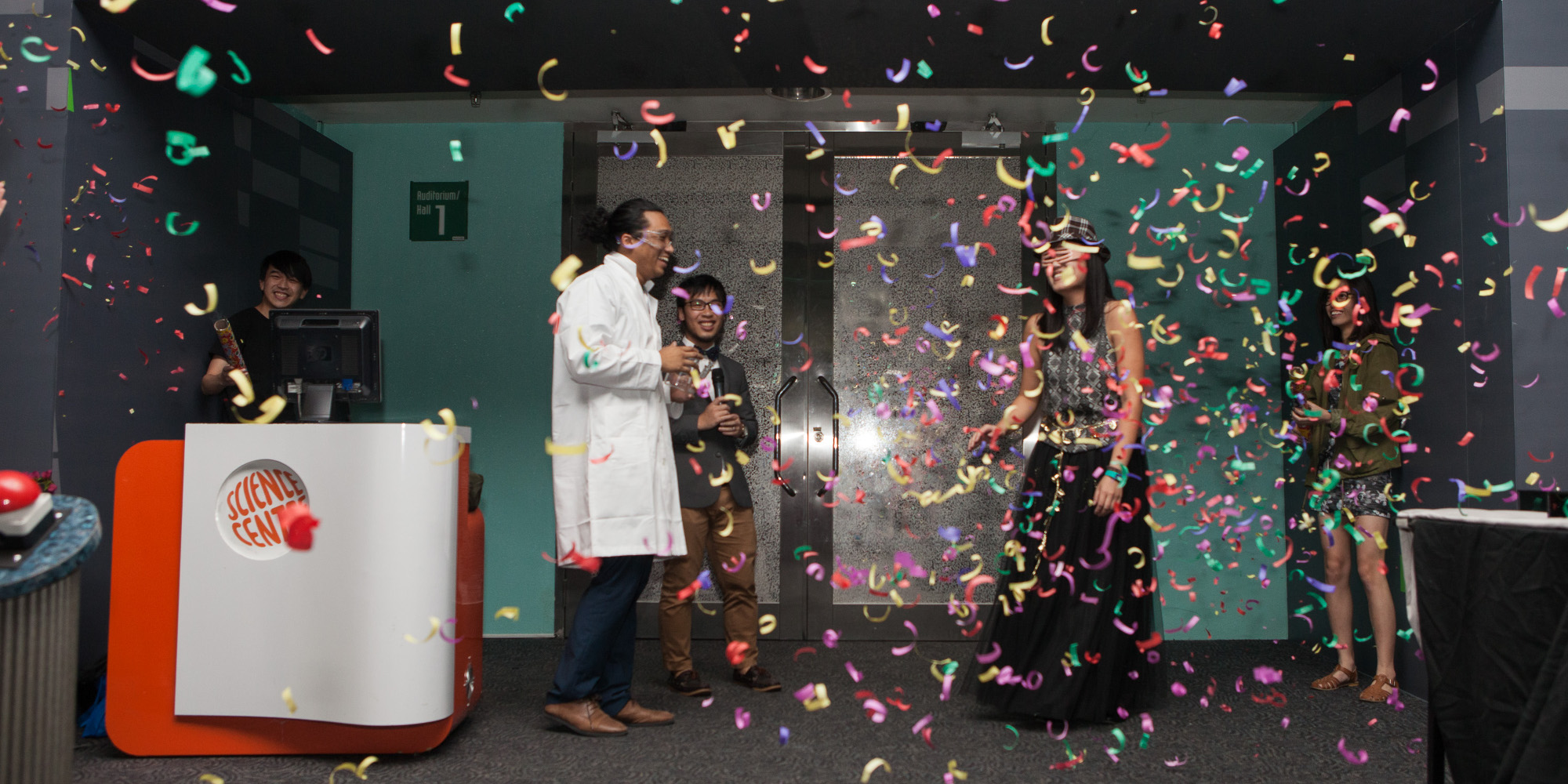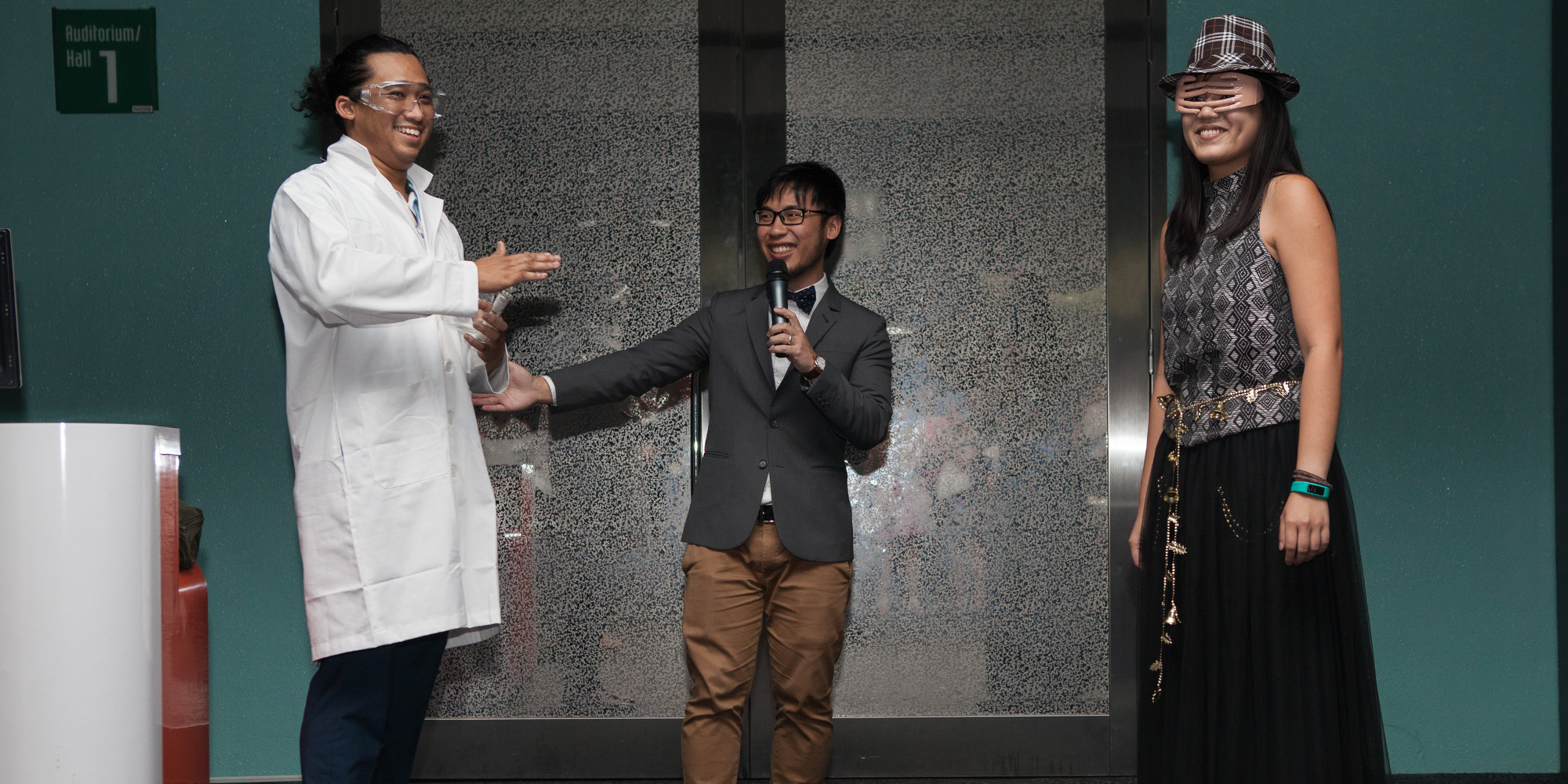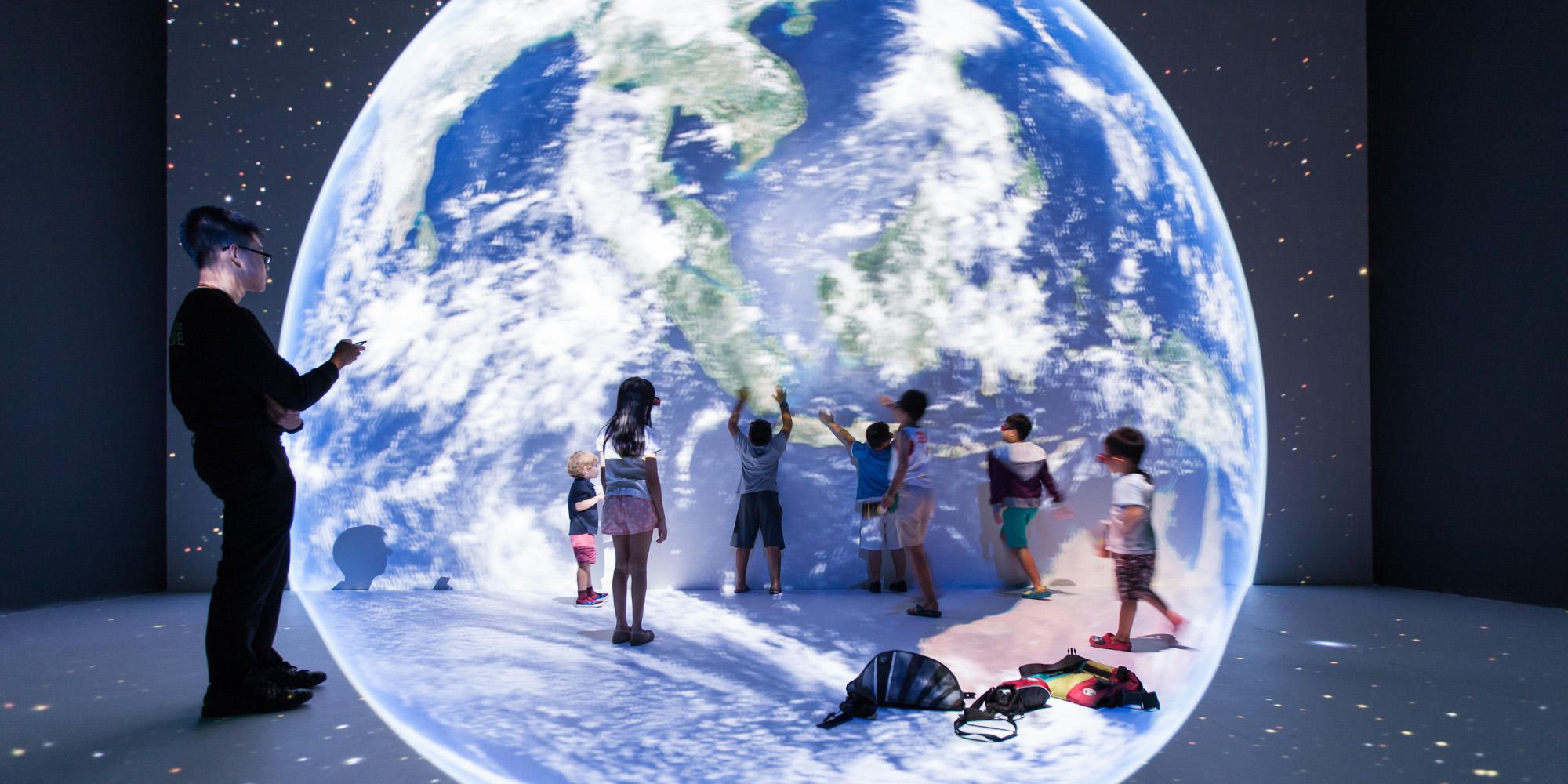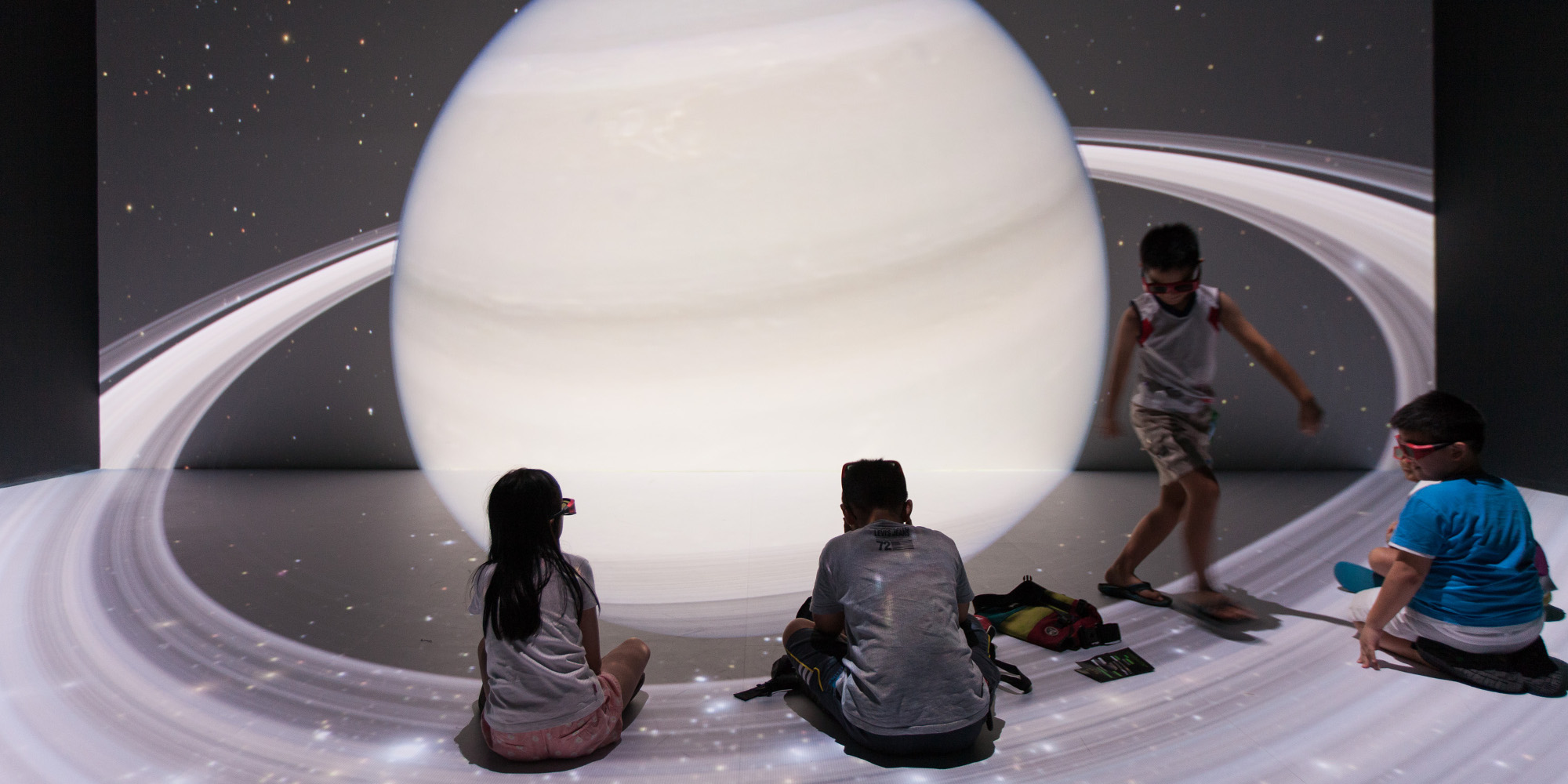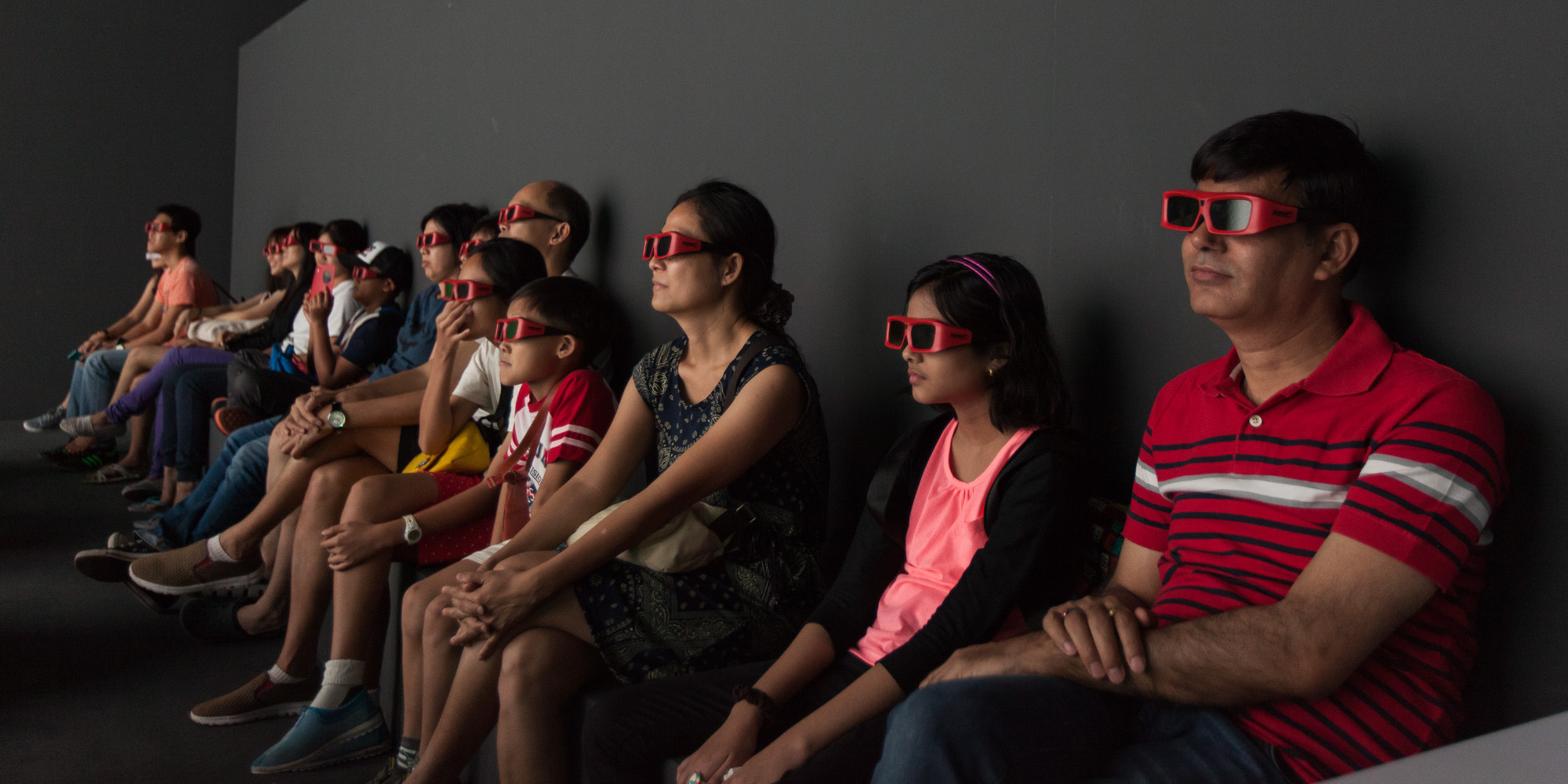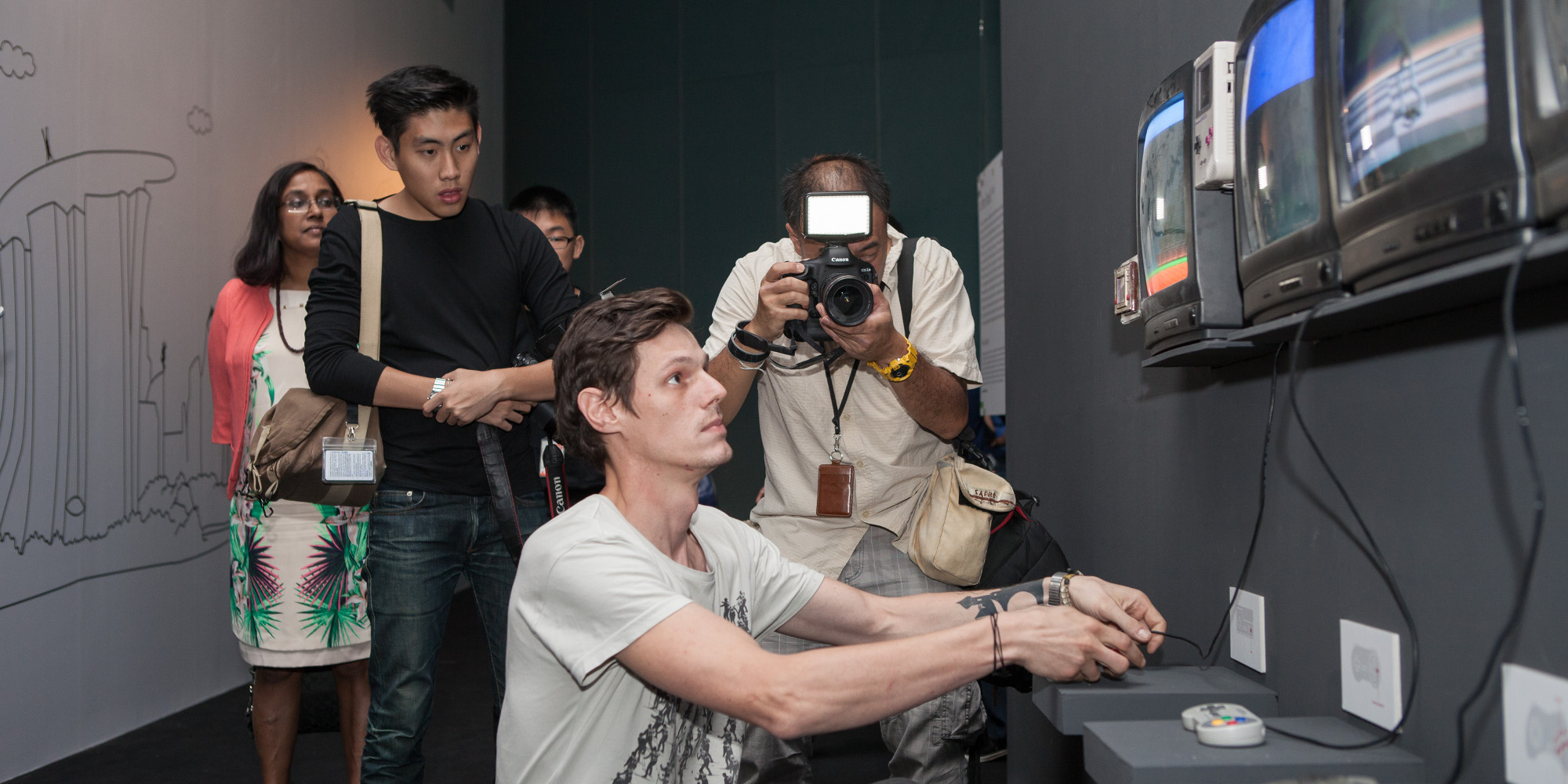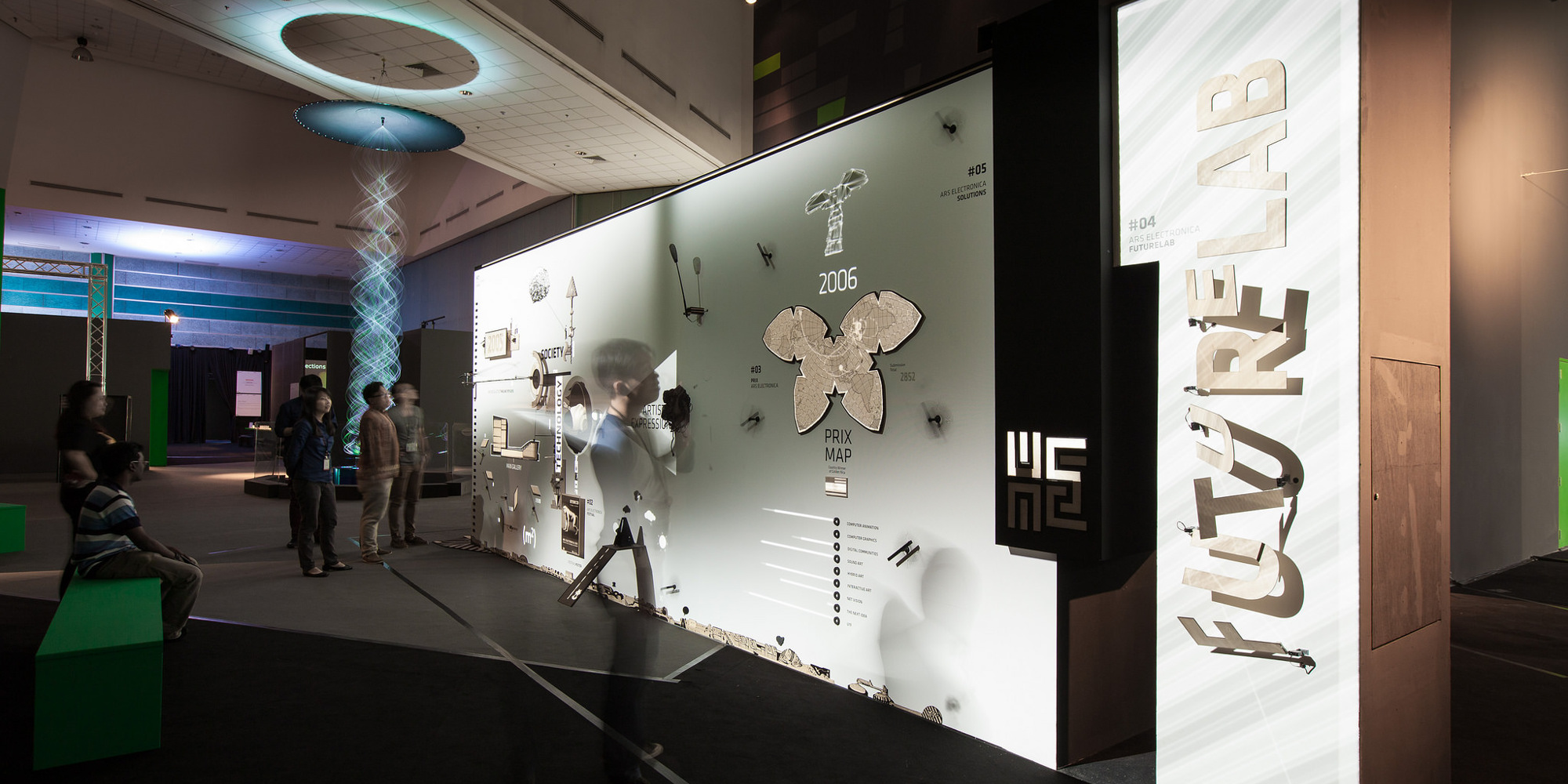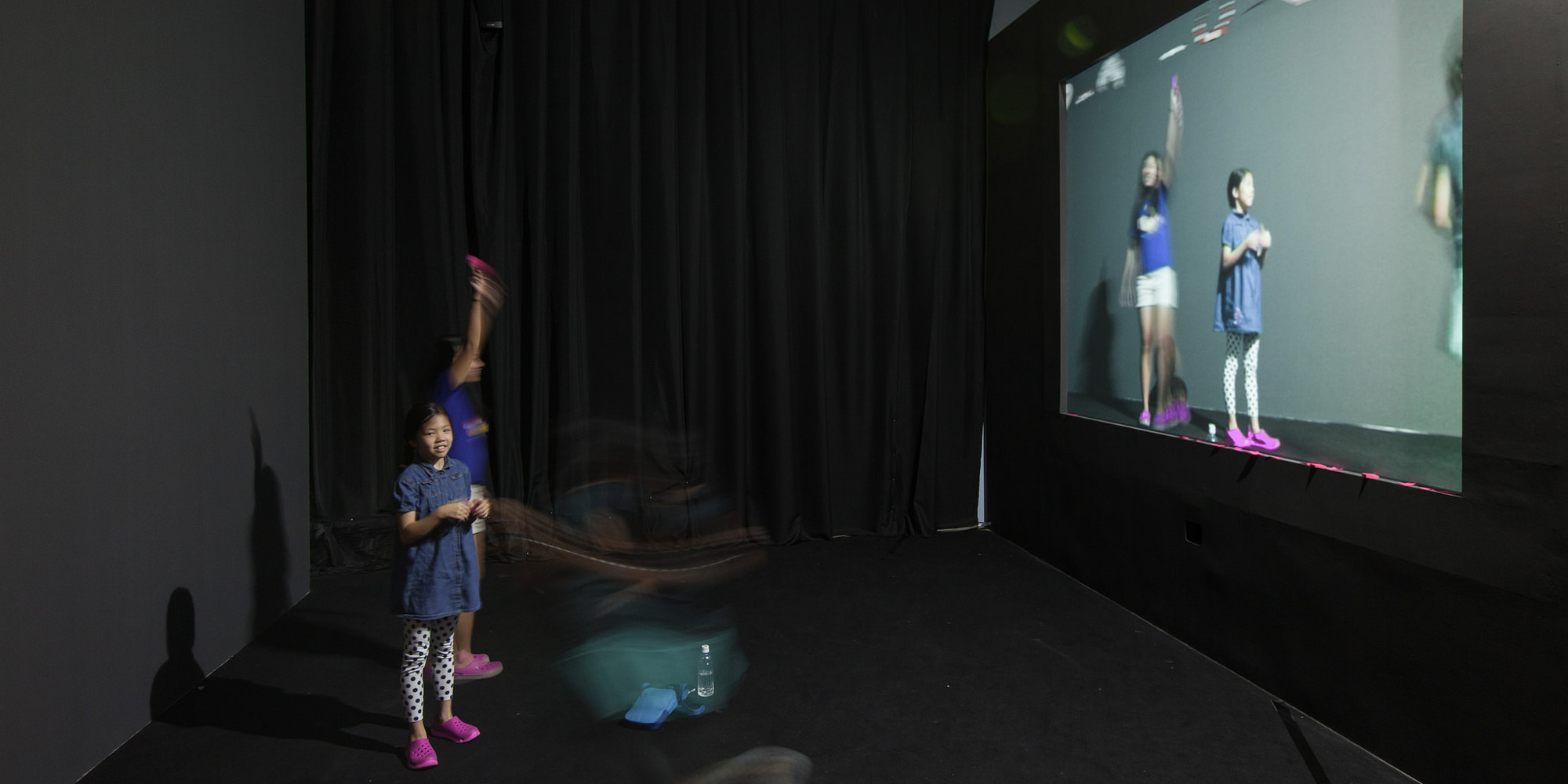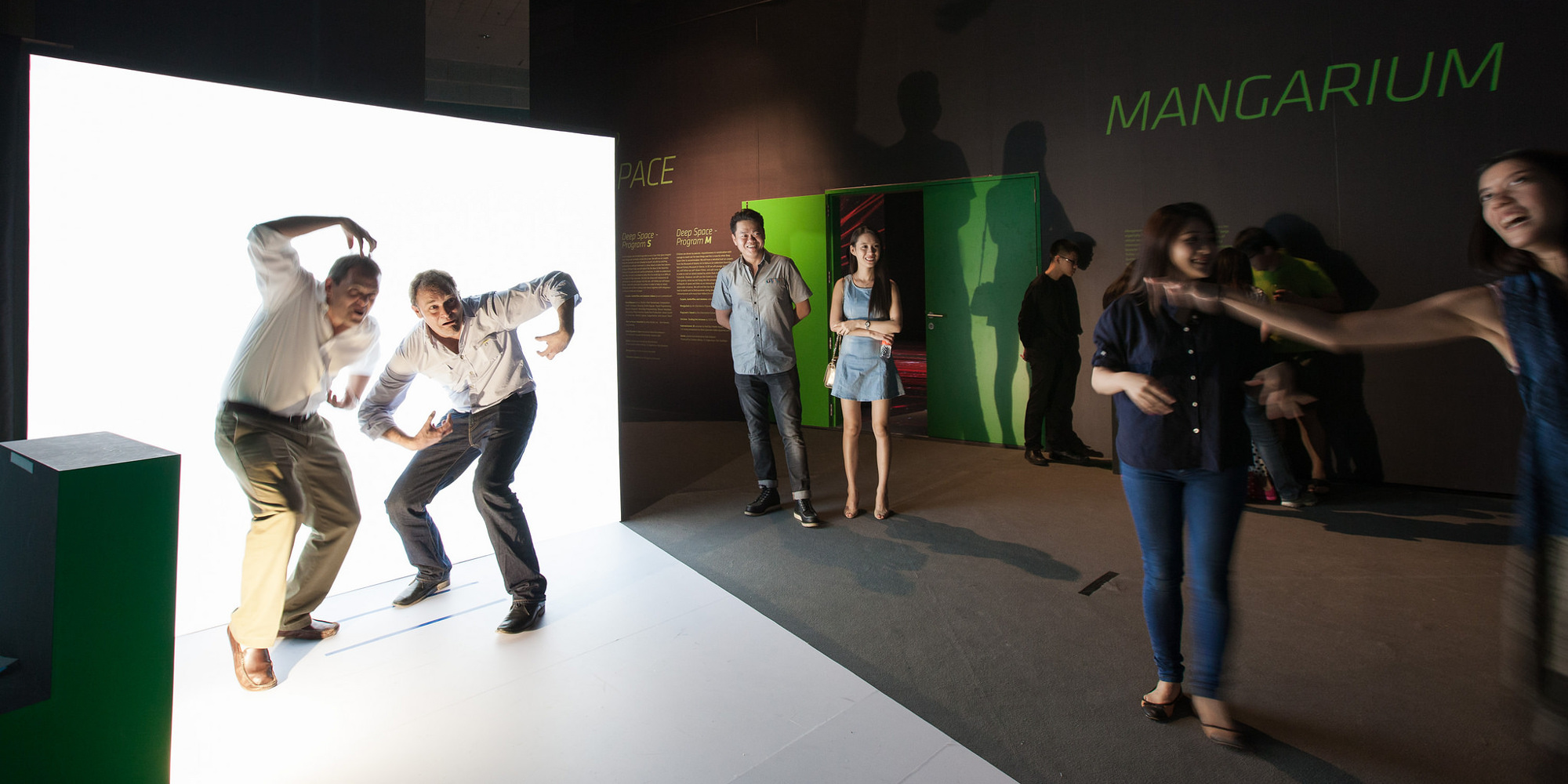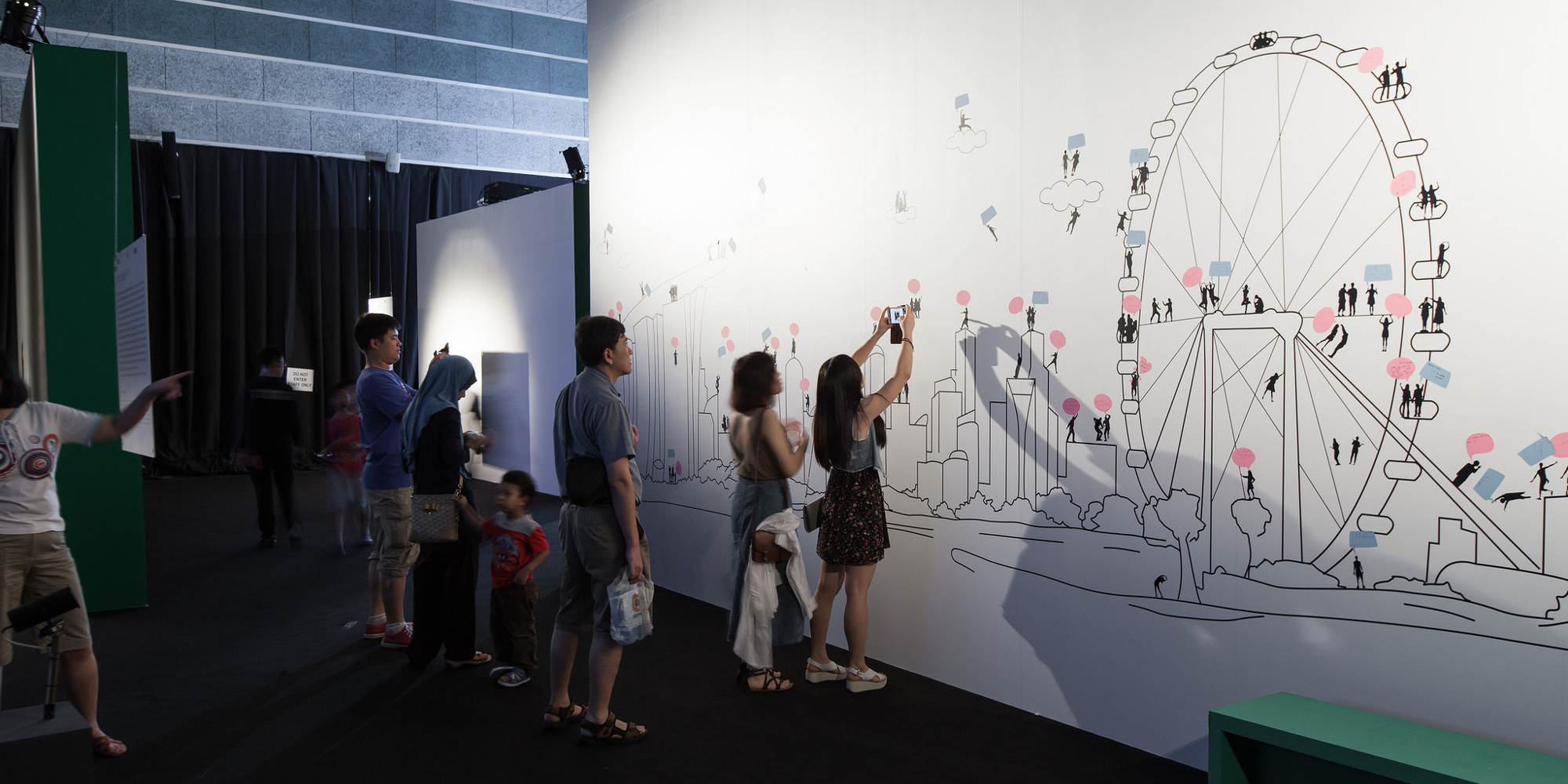Credits: Florian Voggeneder
A mobile version of Deep Space, the multidimensional projection & experience setting for breathtaking images of the micro- and macrocosm that’s a favorite of visitors to the Ars Electronica Center, and seven other art projects are dazzling Science Centre Singapore audiences from May 29 to August 16, 2015. Rounding out the lineup in Singapore are works by international as well as local artists arrayed on a total of 1,500 m2 of exhibition space.
Ars Electronica meets Science Centre Singapore
Eight years after DAT – Digital Art & Technology, Ars Electronica’s huge and hugely successful 2007 premiere in Singapore, we’re back in The Annexe with “INTERPLAY – Where Science Meets Art, a stylish exhibition created in collaboration with Jürgen Haller of any:time Architects and graphic designer Stefan Eibelwimmer.
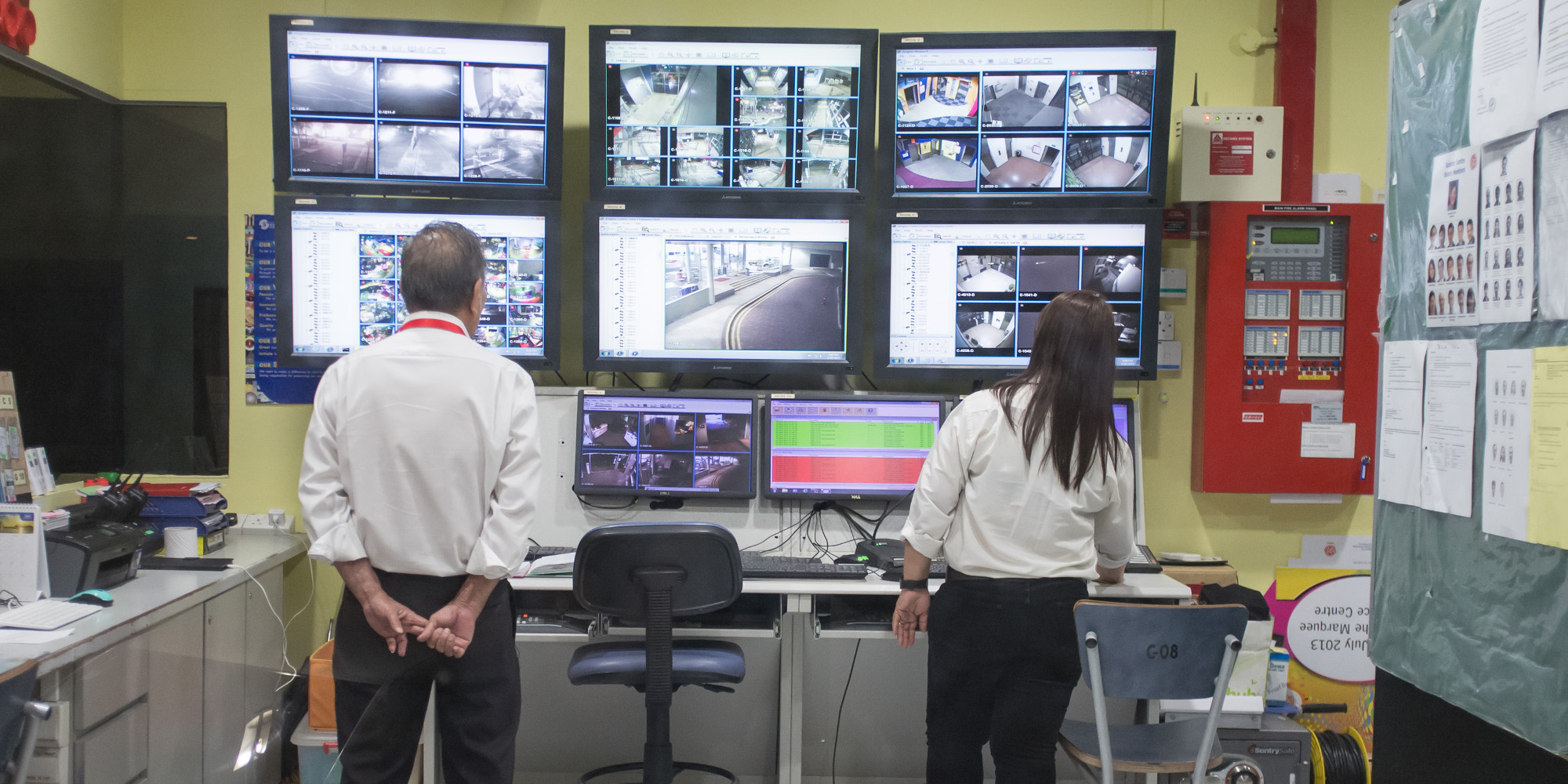
This exhibition was produced on the double — all technical infrastructure had to be completed within only three months. Accomplishing this feat took smooth, efficient collaboration between the production teams in Singapore and Linz. Everybody on all levels pitched in to make the impossible a reality!

One of the key contributions to the success of an exhibition is made by the young men and women responsible for person-to-person contact with exhibition visitors — welcoming them to the space, answering their questions and providing interaction assistance. Wide-ranging knowledge across the scientific spectrum — including some highly complex material — was absorbed in an astoundingly short time by the university students serving as Infotrainers during the exhibition’s run.
The Grand Opening
The exhibition opened with a press conference on May 29, 2015 at 10:30 AM. Among the speakers were Clarence Sirisena (second from the left), assistant director of Science Centre Singapore, and curator Manuela Naveau of Ars Electronica (to the right of Clarence Sirisena), who planned and implemented the exhibition over the course of protracted telephone conversations. Paul Friedlander (on the far left) and Ed Tannenbaum (on the far right) contributed outstanding works that have been acquired by Science Centre Singapore and will become part of the facility’s permanent exhibition after August 2015.
This get-together of the two curators—physicist Clarence Sirisena and artist Manuela Naveau—certainly proceeded in the spirit of the exhibition’s title. And Science Centre Singapore’s staff also visualized that title in colorful terms during a specially developed opening show highlighting that this exhibition scrutinizes the connection between art and science.
With charming spontaneity and exemplary attentiveness to the exhibition in its entirety, some energetic young Singapore staffers who, actually, already had their hands full with production issues during the intensive setup phase just prior to the vernissage found the wherewithal to stage this opening performance too. Science Centre Singapore gave a textbook demonstration of how to bring off a successful exhibition opening, and their efforts garnered delighted applause from the assembled international guests, artists and Ars Electronica staffers.
Images of the Micro- and Macrocosm
This is the first time that Deep Space has appeared outside Linz. A compact, mobile version was developed especially for the Science Centre Singapore exhibition. An approximately 8×5-meter wall & floor projection features the same content that has made Deep Space a visitor favorite in Linz. 2-D and 3-D worlds are screened in Show Mode. This material is interspersed with artistic applications that put audience members’ sense of space and sensory perceptions to the test.
Three programs created especially for Science Centre Singapore can be selected and displayed by the Infotrainers depending on their spectators’ needs, interests and ages. A program specially developed for visitors age 3 and up is designed to enable youngsters to immerse themselves in the imagery and react to it. This is a playful, fun way to trigger cognitive experiences and to discuss them in a group setting.
Projects in the Interface of Art and Science
Game Border is an installation by Japanese artist Jun Fujiki. It’s a computer game in which reaching the next level means moving on to the next game. When the on-screen avatar makes the cut in the first game’s software, it literally makes the jump to the second game’s hardware. And on the adjacent monitor, the game-playing continues. And so on…
Young Polish artist Marek Straszak is the mastermind behind an impressive installation entitled ArsRecollected. Video mapping meets kinetic objects. And to boot, the whole elaborate production tells a story: the history of Ars Electronica since its origins in 1979 to the present day. Animated infographics and a sound installation make for pleasant time travel.
Have you ever thought to yourself: Wouldn’t it be cool to star in my own comic book? Now, New Zealand-based artist Nova Jiang’s installation Ideogenetic Machine gives you the chance you’ve been waiting for! Not only can you generate a comic-style self-portrait; the style and substance of your graphic input can also have an impact on the comic’s plot.
o.lhar (look) by Brazilian artist Raquel Kogan invites installation visitors to peer into a device, though they quickly realize that they’re actually seeing nothing but flashes of light. What’s interesting here is that the relationship between the observer and the object being observed is inverted—the artwork that attracts spectators’ glances is suddenly staring back. Now, who’s looking at whom?
We’re all familiar with these: picture books with characters inside that you can clothe yourself. The garb and accessories are delivered with the book—either as cut-out sheets or as ready-to-wear articles. Digital Puppetry, an installation by German artist/scientist Tine Papendick, works similarly. But while the installation visitors are busy dressing up digitally, the artist is conducting an inquiry into our attitudes towards identity, our self-image and how we picture strangers.
Hard to believe, but this seemingly playful and by no means heavy-handed installation entitled A Matter of Factory by an Australia artistic duo named Softstories (Isobel Knowles and Cat Rabbit) packs one helluva punch. In this industrial plant, sausages are processed into dogs, packaged and sold in supermarkets for $2.99 apiece. The artists’ (slightly over-the-top) question: Why is it necessary to constantly develop new retail products that are the output of production processes which are at odds with our fundamental ethical principles? Moreover, at the outset of a product development process, the demand for products doesn’t seem to be relevant anymore. All that counts is supply.
The Ars Electronica Futurelab is celebrating the fifth anniversary of its Shadowgram. The installation has been exhibited in Linz, Vienna, Tokyo, Taichung, Regensburg and Singapore. Meanwhile, an Ars Electronica Solution crew has used it as the basis of a “social brainstorming” tool that agencies and consultants can lease or purchase. In Singapore, Ars Electronica is employing Shadowgram to create a wall full of knowledge that asks “What do you wish others to know?” We hope that this project contributes to making people aware of how important hierarchy-free knowledge transfer is in a world in which knowledge and the lack thereof are so tightly interwoven.
Ars Electronica Academy
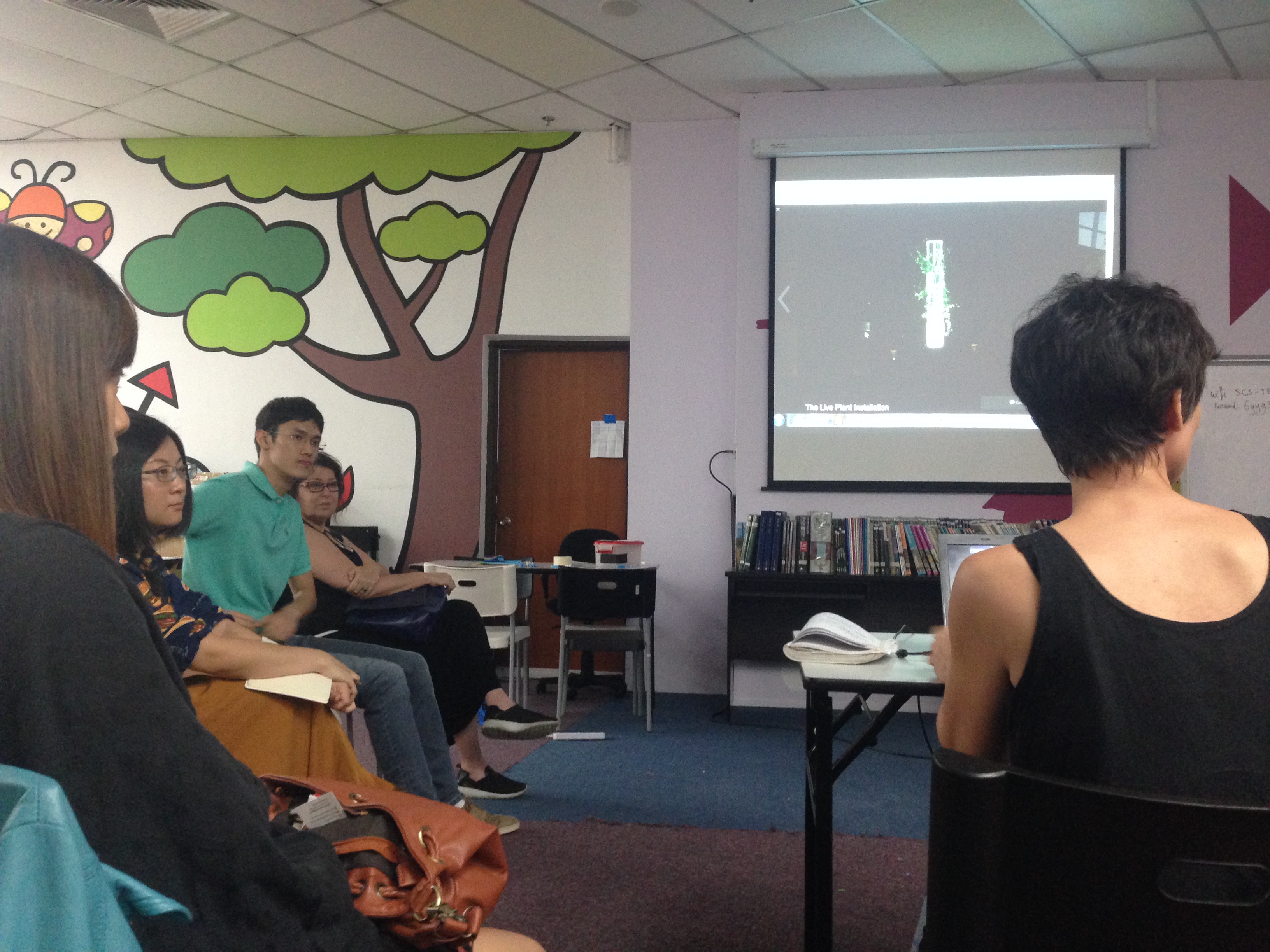
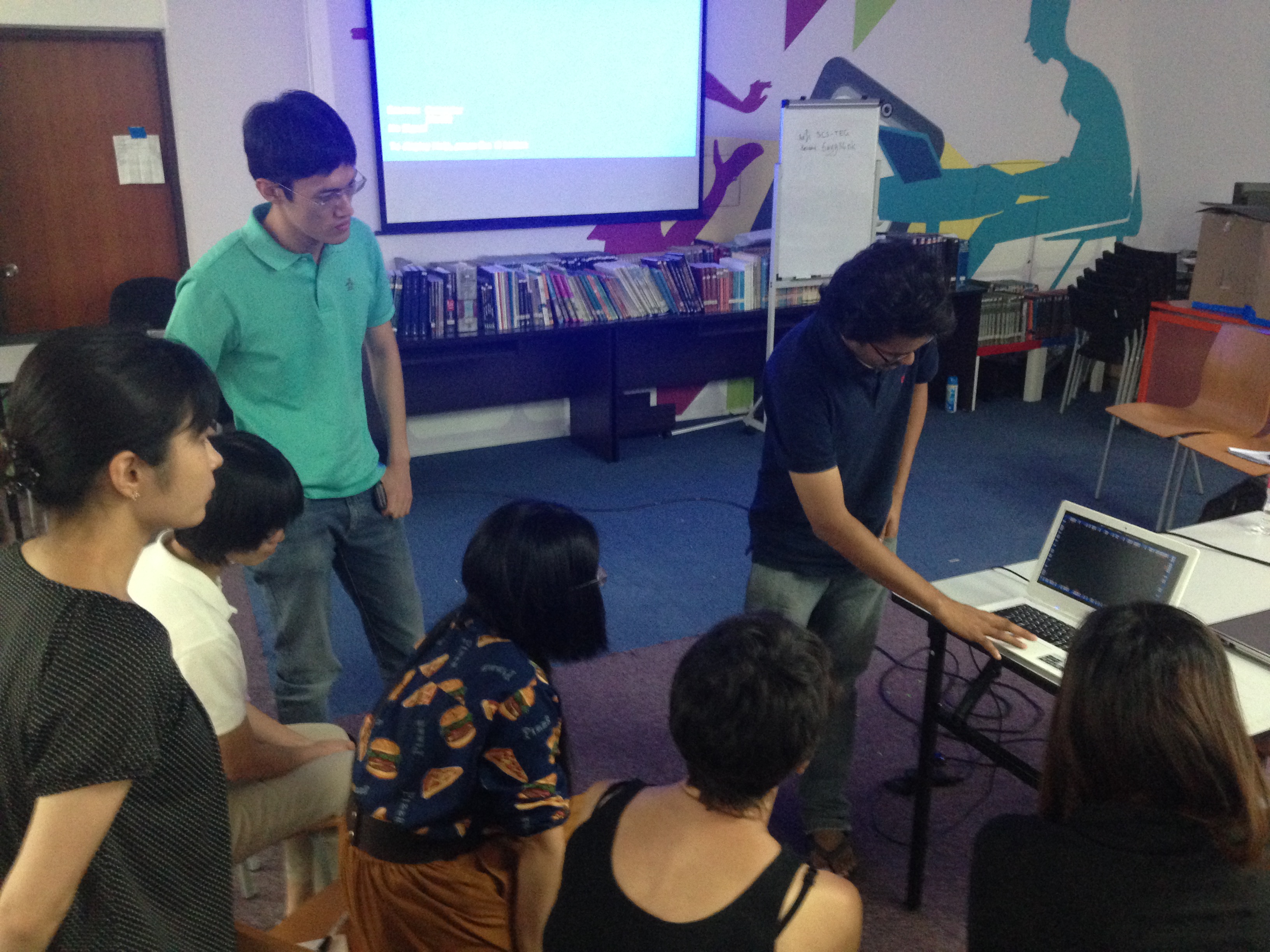

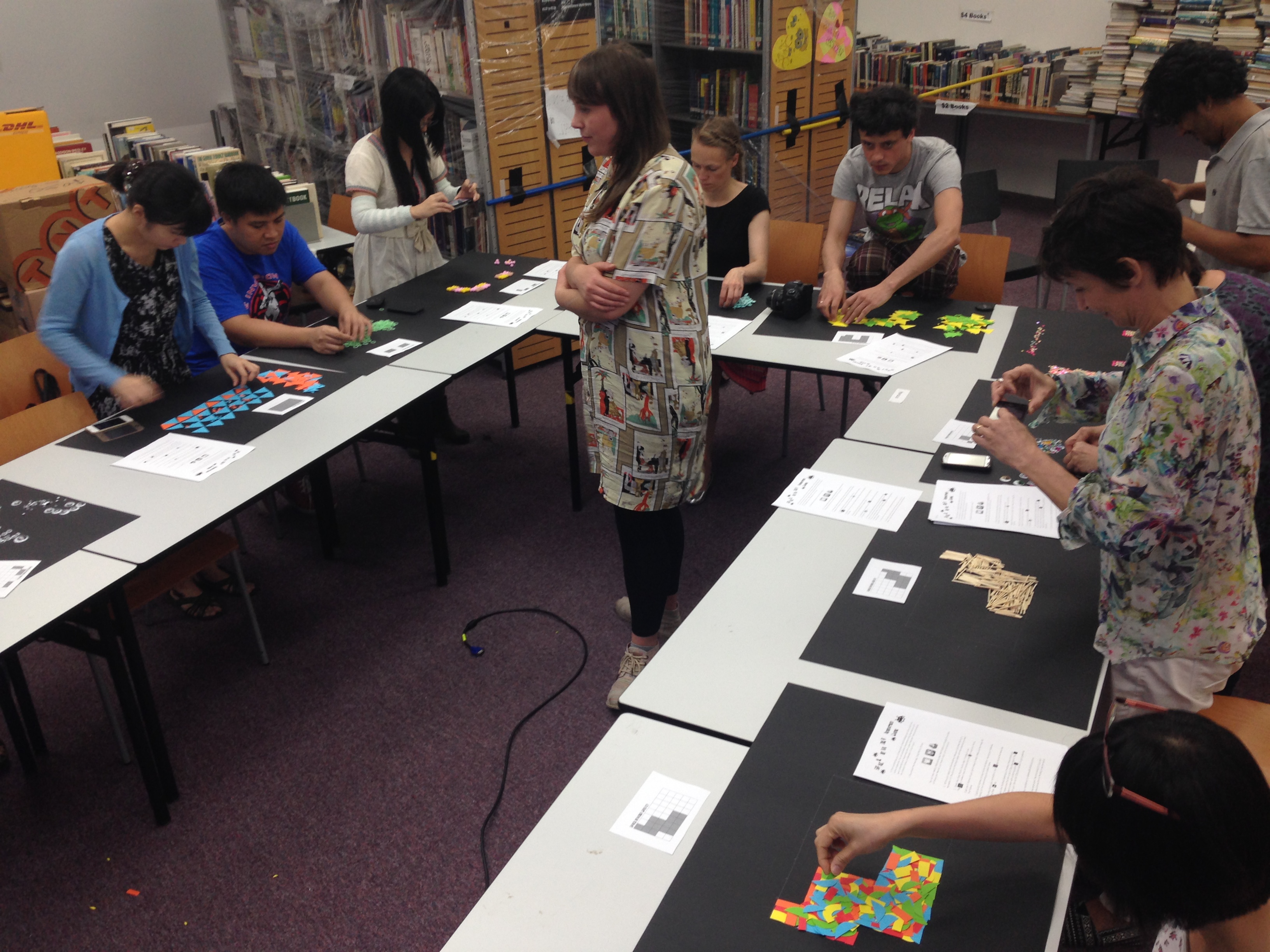
The Ars Electronica Academy was set up to provide a platform for intensive consideration of all the substantive encounters launched by the artistic works in this exhibition. On two days, from 10:30 AM to 3 PM each day, Ars Electronica staffers got together with artists, scientists and interested students, teachers, artists and designers from Singapore to discus playful approaches to artistic and scientific practice.
The exhibition “INTERPLAY – Ars Electronica Linz meets Science Centre Singapore” will be open until August 16, 2015. More information: http://export.aec.at/interplay/
